In my quest to find out who had manufactured a pretty antique Odorless skillet I used to own, I uncovered a huge amount of information. So much so that I’ve written two blog posts about the topic!
Coal, Coke, & Wood-Burning Stoves
To understand the Odorless skillet and other kettles/pans/broilers designed for the same purpose, it is necessary to understand how wood stoves of that day were constructed. The old stoves had “eyes” on the range, which were covered with “lids.” When cooking, you could use a pan either on the lid, or remove the lid using a “lid lifter” to generate more heat from the fire in the oven. Certain kettles and pots, as well as skillets with heat rings, were designed to fit within the open eye of the range. The number on the pan or pot corresponded to the number on the stove eye.

A chimney is necessary to use these stoves; the chimney pipe goes into the oval hole you see at the center top of the stove in the drawing above. The chimney drafts the smoke up and out of the house.
Cooking Odors
Cooking on the range of the old stoves had its drawbacks. Besides the soot and ashes and arduous task of constantly feeding the fire or tending the wood and regulating temperature, odors from the stove and from cooking would waft throughout the house. The Odorless skillet was designed to address this concern. Apparently, it was a big one.
“I’ve dismissed more cooks for letting the fumes of boiling meat get through the house than for any other one reason.”
According to the Hunter Sifter Mfg. Co. in 1884, their “Double Safety Odorless Holloware” Kettle not only removed odors, but it also cured the sick and would improve “the health of the women” as they would not become nauseated by food odors.
Different Versions of the Odorless Cooking Vessel
When I was researching my Odorless skillet, I posted some questions about it on the Griswold & Cast Iron Cookware Association Facebook page. Experienced cast iron collectors stepped up to help me on my quest for more information. Along with learning about my pan, I learned about pans made by other manufacturers designed to reduce cooking odors in the home.
Clark Odorless Fry Pan by Boardman
Collector Vincent Warren of Wyoming shared photos of an odorless skillet from his collection. The pan was manufactured by S.H. Boardman of Boston, MA, and carries patent dates of April 7, 1891, and January 1, 1898.
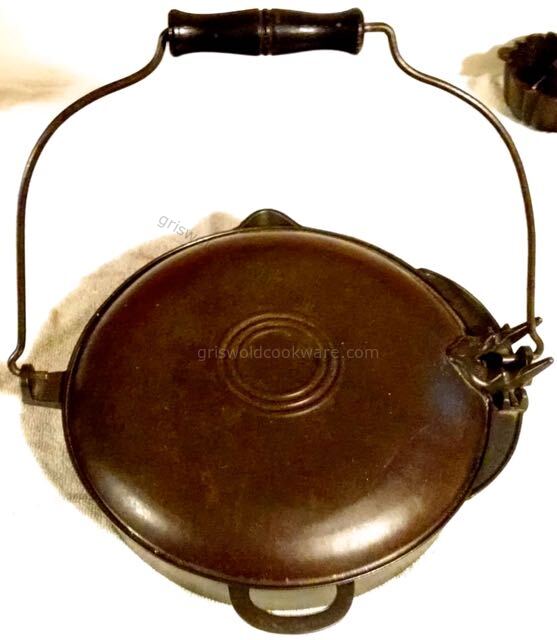
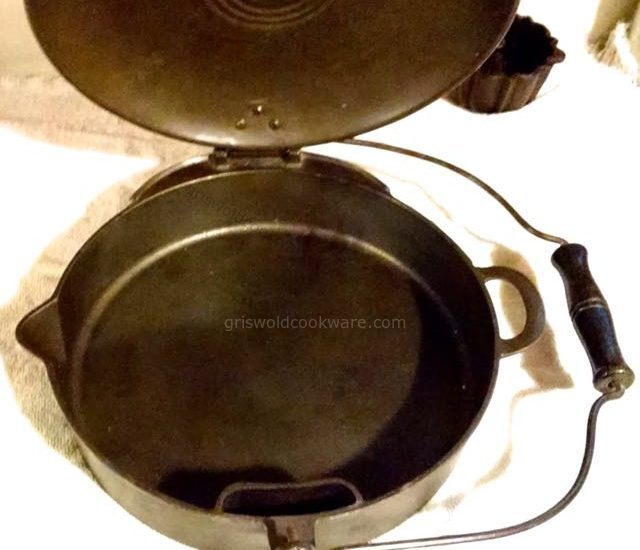
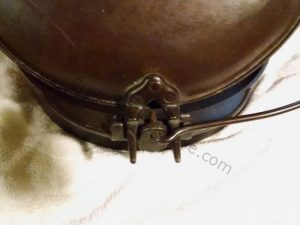
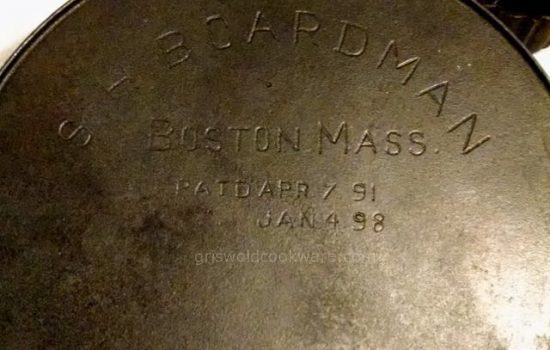
As you can see, Vincent’s pan has a lid that is attached to a hinge mechanism. When the bail handle is lifted upright, the cover goes down via the hinge mechanism. When the handle is down, the cover goes up. The article below describes the function of the pan.
I found a few fun ads for Vincent’s pan, called the “Clark Odorless Fry Pan.” You could fry in your parlor – who knew!


“Victor” Odorless Skillet
Collector Leroy Lasher of Pennsylvania was also kind enough to share with me three odorless skillets – in sizes 7, 8, and 9 (the sizes correspond to the stove eye number). The number 8 and number 9 skillets carry a patent date of 1879. They were apparently manufactured by a foundry with the name of “Victor.” I learned that there were several foundries with the name “Victor,” so I was unable to pinpoint the foundry that manufactured Leroy’s pretty pans.
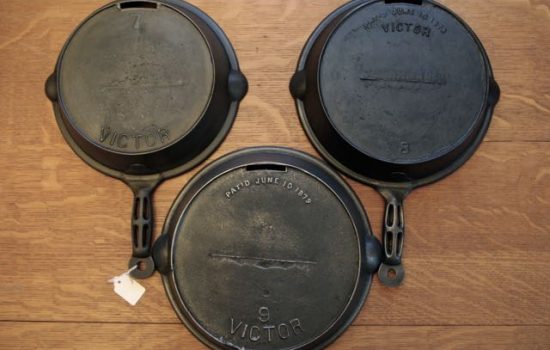
Interestingly, the patent for the three Victor skillets above was for the handle of the skillets. The perforations you see in the handle were designed to circulate air and keep the handles from becoming too hot to touch. The opening on the bottom of the three skillets (seen in the above photo) would be another form of the odorless skillet once the skillet was covered. The theory was the same – odors and vapors would draft down into the oven and out through the chimney.
The Morgan Broiler
Nebraska Collector Doug Wenz brought yet another version of an odorless pan – this one actually a broiler – to the 2018 GCICA Convention in Baton Rouge, Louisiana. He was kind enough to send photos of it to me along with the patent information and a few advertisements. His pan is called the “Morgan Broiler.”
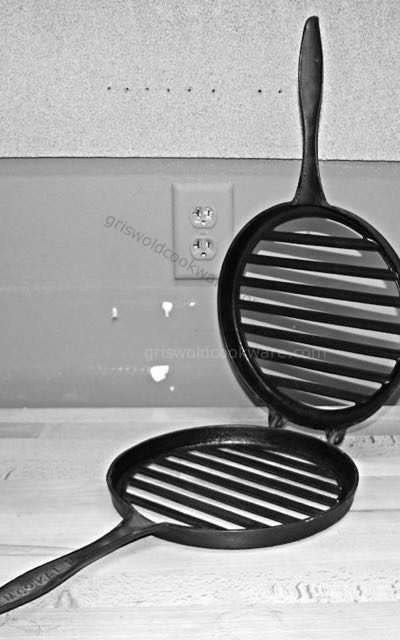
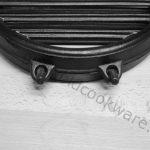

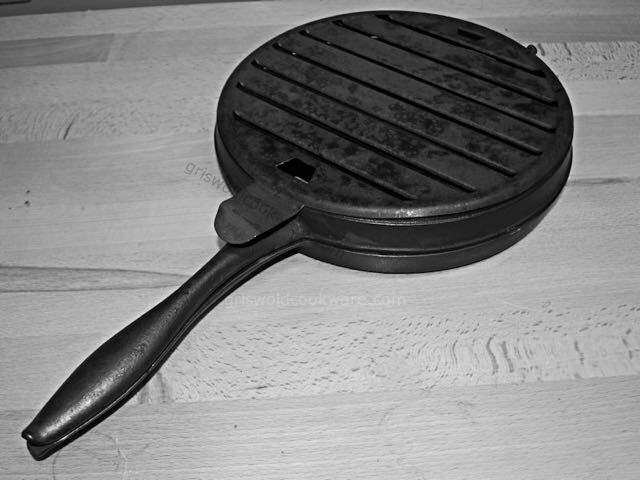
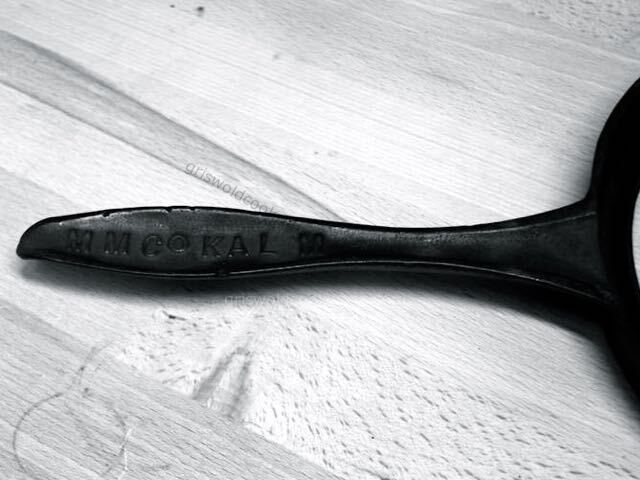
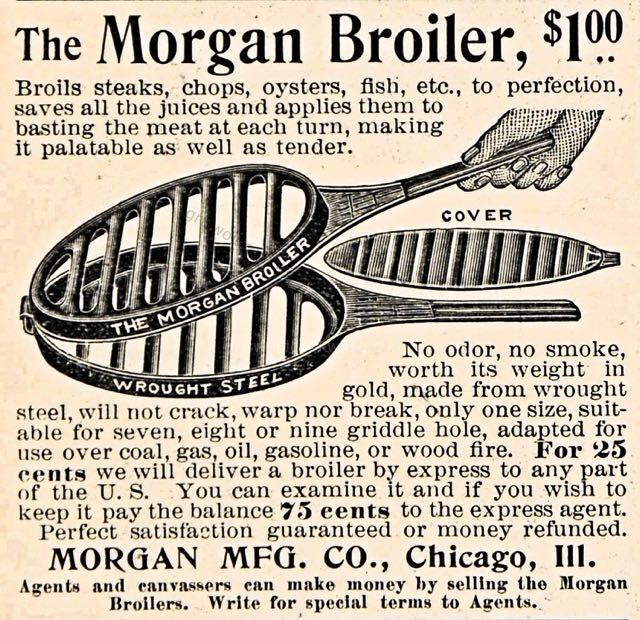
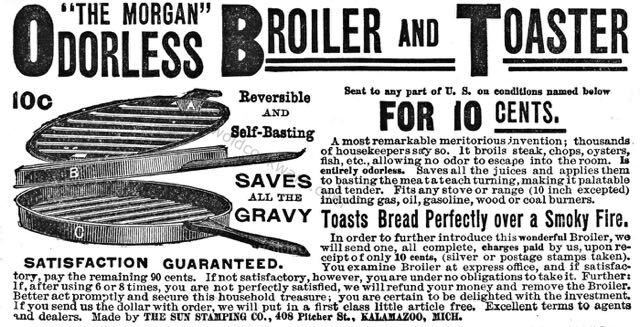
The Magic Spider
Pennsylvania collector Jim Fuchs shared photos of a VERY old odorless skillet from his collection, which carried a patent date of March 26, 1861 – about two weeks before the outbreak of the Civil War. That odorless skillet is called “The Magic Spider.” His skillet also has its original cover, which is quite remarkable; very old lids are hard to find.
The concept of the Magic Spider is the same as that of the other Odorless pans. The cover forces vapors/odors back down through the opening in the skillet into the open stove eye, which are then drafted up and out via the chimney.
Jim Fuchs explained it to me as follows:
“The lids on the odorless pieces help retain the vapors/odors. All odorless pieces allow air into the piece (due to the “negative” pressure in the firebox). So when cooking, air is drawn into the piece, and pulled into the passage, and down into the firebox. The old Morgans, and even the Magic Spider get their air from in between the handles on the skillets. The broiler of course doesn’t require that, as there is a lot of open areas to bring air in. The Boardman would pull air through the lip….other designs had vents in the lids. Regardless, the concept is the same….help retain the vapors/orders vis a lid, allow air into the cooking area, where it is drawn into the negative firebox, and out the stove vent. The work/action is the result of the containment & drawing in of air to allow venting.”
As explained to me by Jim Fuchs.
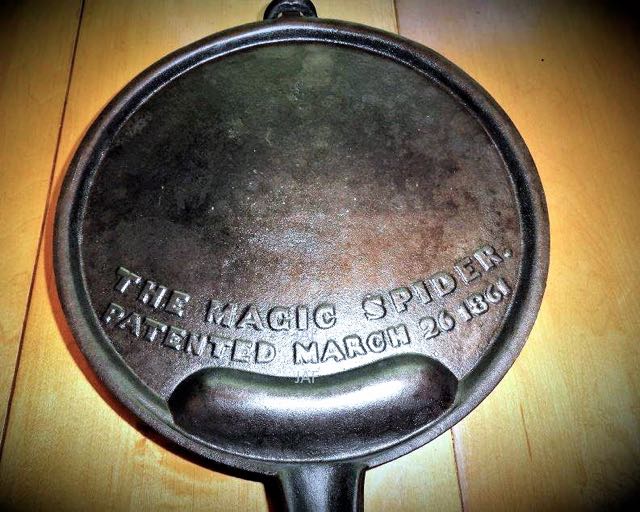
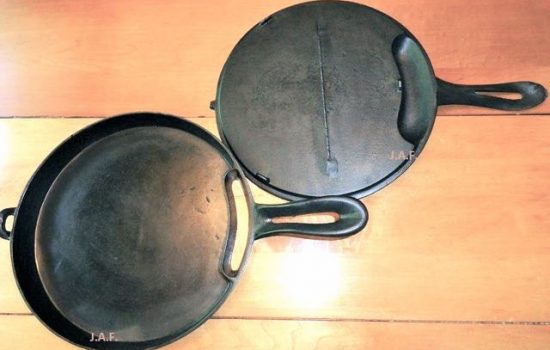

That, my friends, concludes my treatise on the Odorless skillet. It’s been quite an interesting learning experience for me; I hope you learned something new, too!
Note: Originally written and posted in 2018.
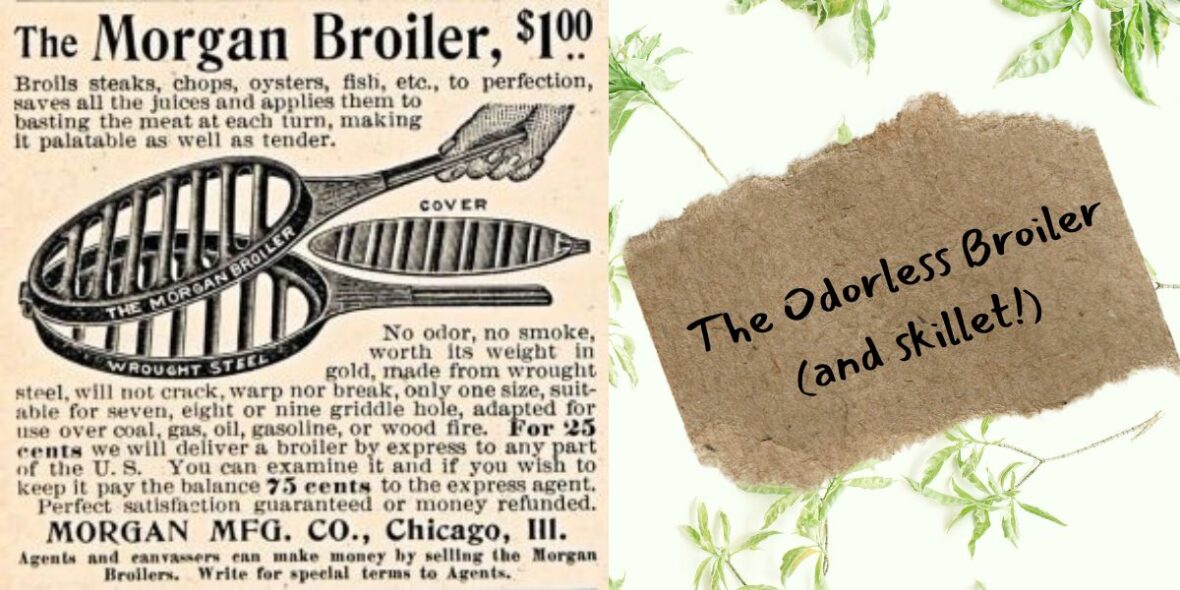
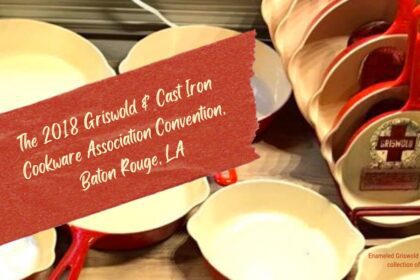
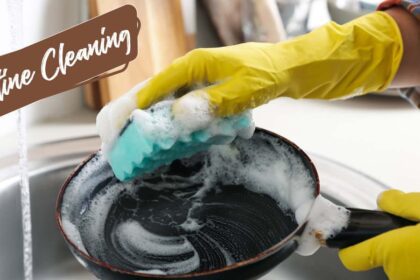
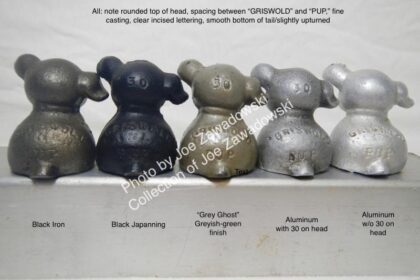
One Comment
Pingback:
July 5, 2018 at 2:08 pm